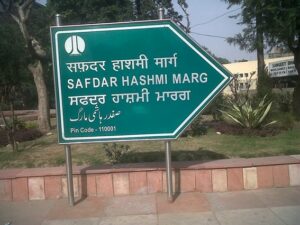Note: This blog post was originally written in Japanese for our Japanese website. We used our machine translation platform Translation Designer to translate it and post-edit the content in English. The original Japanese post can be found here.
“What language is spoken in India? Since it was a British colony, they should be able to communicate in English. But we often hear namaste — is that Hindi?”
This might be the image of Indian languages for people who are not familiar with the country. However, contrary to this image, India is a country with a complex linguistic situation that is full of surprises.
How incredible is India! Let’s dive into the languages of this country.
How many official languages are there in India?
Article 343 of the Indian Constitution stipulates that the official language of India is Hindi. However, there are about 500 million Hindi speakers in India, which has a population of 1.38 billion.
What languages do the rest of India speak? About 461 languages are currently spoken in India. Of those, 121 have more than 10,000 speakers, 22 of which (including Hindi) are officially recognized in the Indian Constitution. Below is a list of those 22 languages, many of which are official state languages.
| Assamese | Sanskrit |
| Manipur | Kannada |
| Bengali | Santal |
| Marathi | Kashmiri |
| Bodo | Sindhi |
| Nepali | Konkani |
| Dogri | Tamil |
| Odia | Maithili |
| Gujarati | Telugu |
| Punjabi | Malayalam |
| Hindi | Urdu |
English is widely used as a semi-official language, but of course, there are many people who do not speak it. When the population is huge, the sheer number of languages spoken can be overwhelming. But it's not just the number of languages that’s surprising when it comes to Indian languages.
Language diversity #1: Indian languages with different language families
One might think that the large number of languages spoken means that many of them are descended from the same language and are similar to each other (like Italian and Spanish, which are proto-Latin languages).
Of course, there are many such languages, but if you divide Indian languages into language families, you have:
- Indo-European languages
- Dravidian languages
- Munda languages
- Tibeto-Burman languages
The Indo-European languages include English, Spanish, and Hindi, while the Dravidian languages include Tamil and Telugu. You can probably understand that not everything is positioned like a dialect because even the language families are different.
Language diversity #2: Indian languages with different writings
English and European languages are mostly written using the alphabet. So, if you can read the alphabet, you can get an idea for how it sounds. Indian languages, however, often use different characters.

The sign above is a road sign in Kerala, located in the south of India. It is a sign to a famous temple called Sabarimala. The top is Malayalam, the official language of Kerala, followed by Hindi, Telugu, Kannada, Tamil, and English. (Telugu, Kannada and Tamil are the official languages of the states located in the south of India.) The third (Telugu) and fourth (Kannada) from the top are quite similar in spelling while they are not at all similar to the second from the top, Hindi.
Hindi and Urdu (spoken mainly in North India and Pakistan) are said to be two standards of the same language linguistically. However, one big difference is that Urdu is written in the Urdu script, which is an Arabic script, and Hindi is written in the Devanagari script, which is an Indian script.

The above signboard is a road signboard in Delhi. From the top, the languages are Hindi, English, Marathi (the official language of Maharashtra, where Mumbai is located), and Urdu. Hindi and Marathi are written in the same script, Devanagari, so they are quite similar. But when compared to the bottom language, Urdu, you can see they are very different.
The good news is that the grammar and basic vocabulary are the same, so mutual understanding is possible. But it is interesting that they feel like languages from different countries from their difference in appearance.
Indians are multilinguals?
With so many languages, it really seems like it would be difficult for communication to occur in India, even domestically.
But the truth is that many Indians are multilingual. At tech companies in India, there are many people who can speak at least 3 languages, which will be English, the official language of the state, and Hindi. There are even some people who can understand 5 to 6 languages if you include languages with limited proficiency.
However, for those over 60 who belonged to lower castes, there are many people who speak only the official language of the state in which they live because they were not able to receive a satisfactory education.
Kawamura's translation services
In this post, we shared some information about the surprising language situation in India. In the past, the Indian government tried to unify the official language to only Hindi throughout the country. However, it seems that unification was difficult due to opposition from various regions.
With that said, there are many Indian languages that are likely to grow in the number of speakers. If you need any translation support with these languages, please feel free to contact us. We provide professional translation services for many Indian languages, such as Hindi, Bengali and Tamil.
_CMYK_OL.png)

